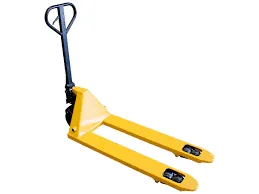


Understanding the Vital Lever Hoist Essential Equipment for Lifting Solutions
In industries ranging from construction to manufacturing, the importance of reliable lifting equipment cannot be overstated. Among the various lifting tools available, the lever hoist, often referred to as a come-along or lever block, stands out as a particularly vital piece of machinery. This article explores the functionality, benefits, and best practices for using lever hoists effectively.
What is a Lever Hoist?
A lever hoist is a mechanical device used to lift or lower a load by applying force through a lever. It consists of a few key components a heavy-duty chain, a ratchet mechanism, and a lever arm. The operator pulls on the lever, which engages the ratchet and allows the chain to lift the load with minimal physical effort. Lever hoists can vary in capacity but are generally designed to handle loads ranging from a few hundred pounds to several tons.
How Does a Lever Hoist Work?
The operation of a lever hoist involves simple yet effective mechanics. When the lever is pulled downwards, the ratchet mechanism engages, allowing the chain to move and lift the load. Releasing the lever disengages the ratchet, which prevents the load from falling. This one-handed operation enables precision and control, making it suitable for tight spaces and intricate lifting tasks that require careful handling.
Advantages of Using a Lever Hoist
1. Portability Lever hoists are typically compact and lightweight, making them easy to transport and store. Their mobility allows them to be used in various environments, from small workshops to large industrial sites.
2. Ease of Use The straightforward mechanism of lever hoists means that they can be operated by a single individual without specialized training. This simplicity makes them favorable in situations where quick lifting solutions are required.
3. Versatility Lever hoists can be utilized for a variety of applications, including construction, maintenance, and rescue operations. They can lift, lower, or horizontally pull loads, adapting to the demands of different tasks.
4. Safety Features Most lever hoists are equipped with safety features such as overload protection and welded frames, which enhance their durability and safety during operations. Properly used, they minimize the risk of accidents associated with heavy lifting.

5. Cost-Effectiveness Compared to other lifting equipment, lever hoists generally offer a more affordable solution. Their low initial investment, combined with minimal maintenance requirements, makes them an economical choice for many businesses.
Best Practices for Using a Lever Hoist
While lever hoists are designed for safety and efficiency, users must adhere to best practices to ensure proper operation and to prolong the life of the equipment
1. Assessment of Load Before using a lever hoist, always assess the weight and nature of the load. Ensure that it does not exceed the hoist's rated capacity.
2. Inspection Perform a thorough inspection of the lever hoist prior to use. Check for signs of wear on the chain, hooks, and overall structure. Any damaged components should be replaced or repaired.
3. Proper Setup Ensure that the hoist is securely anchored to a stable fixture. The load should be directly underneath the hoist to prevent sliding or destabilization during lifting.
4. Two-Handed Operation While the lever can be operated with one hand, utilizing both hands can enhance control and stability, especially when lifting heavy or awkward loads.
5. Clear Work Area Keep the lifting area clear of obstacles and personnel. This minimizes the risk of accidents and allows for a safe lifting environment.
6. Training Although using a lever hoist is relatively simple, it's beneficial to provide training or instructional sessions for all users to ensure safety and efficiency in operation.
Conclusion
The lever hoist serves as an invaluable tool in the realm of lifting and material handling. With its ease of use, portability, and versatility, it caters to a diverse array of applications across multiple industries. By adhering to best practices and ensuring regular maintenance, users can leverage the full potential of lever hoists while maintaining a safe and efficient working environment. Whether in a bustling construction site or a small workshop, the lever hoist remains a vital asset for lifting solutions.



